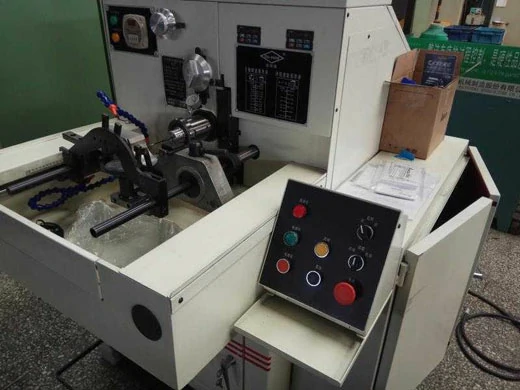8 Types of Grinding Wheel Breakage Causes and Solutions
Grinding wheels are essential tools in various manufacturing and industrial processes, used for cutting, shaping, and finishing metal, wood, glass, and other materials. However, their effectiveness can be compromised by breakage, which not only reduces productivity but also poses safety hazards. Understanding the causes of grinding wheel breakage is crucial for preventing such incidents and ensuring efficient operations. In this article, we will explore eight common causes of grinding wheel breakage and discuss solutions for each issue.
1. Improper Handling and Storage
Improper handling and storage of grinding wheels can lead to damage and breakage. Wheels should be carefully handled to prevent impacts that could cause fractures or weaken the structure. Additionally, storing wheels in a damp or humid environment can lead to corrosion, reducing the wheel’s integrity over time.
2. Excessive Over-Speeding
Operating grinding wheels at speeds higher than their recommended limits can result in catastrophic failure. Over-speeding generates excessive heat, causing the wheel to deteriorate rapidly and increasing the risk of breakage. It is crucial to adhere to the manufacturer’s specified operating speeds for each type of grinding wheel.
3. Improper Mounting and Balancing
Incorrect mounting and balancing of grinding wheels can lead to uneven stress distribution and vibration during operation, resulting in breakage. Proper mounting procedures, including ensuring the wheel is securely fitted and balanced, are essential for preventing premature failure.
4. Inadequate Maintenance
Inadequate maintenance of grinding equipment and wheels can contribute to breakage. Failure to conduct regular inspections, such as checking for cracks, wear, or other signs of damage, can lead to the use of compromised wheels, increasing the risk of breakage during operation.
5. Material Overloading
Subjecting grinding wheels to excessive pressure or overloading them beyond their designed capacity can lead to breakage. It is essential to ensure that the workpiece being ground does not place undue stress on the wheel, as this can compromise its structural integrity.
6. Impact Damage
Accidental impact or contact with hard objects during operation can cause localized damage to the grinding wheel, leading to eventual breakage. Operators should be vigilant to avoid collisions or impacts that could compromise the integrity of the wheel.
7. Incorrect Wheel Selection
Using an unsuitable grinding wheel for a specific application can result in premature wear and breakage. Factors such as material type, hardness, and the intended grinding process should all be considered when selecting a wheel to ensure compatibility and optimal performance.
8. Inadequate Operator Training
Lack of proper training for operators can contribute to grinding wheel breakage. Operators should be fully trained in the correct handling, mounting, and operation of grinding equipment to minimize the risk of incidents caused by human error.
In conclusion, understanding the causes of grinding wheel breakage is essential for safe and efficient operations. By addressing issues such as improper handling, over-speeding, inadequate maintenance, and material overloading, manufacturers and operators can mitigate the risk of breakage and ensure the longevity and effectiveness of grinding wheels. Additionally, proper training and adherence to manufacturer guidelines for wheel selection and operation are crucial in preventing incidents related to human error. By implementing these solutions, industries can maintain a safe working environment while optimizing the performance of their grinding equipment.
.webp)

